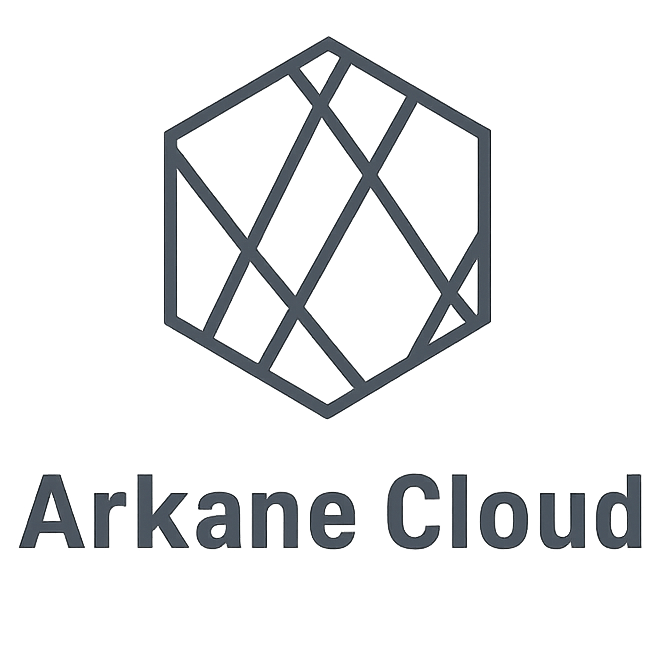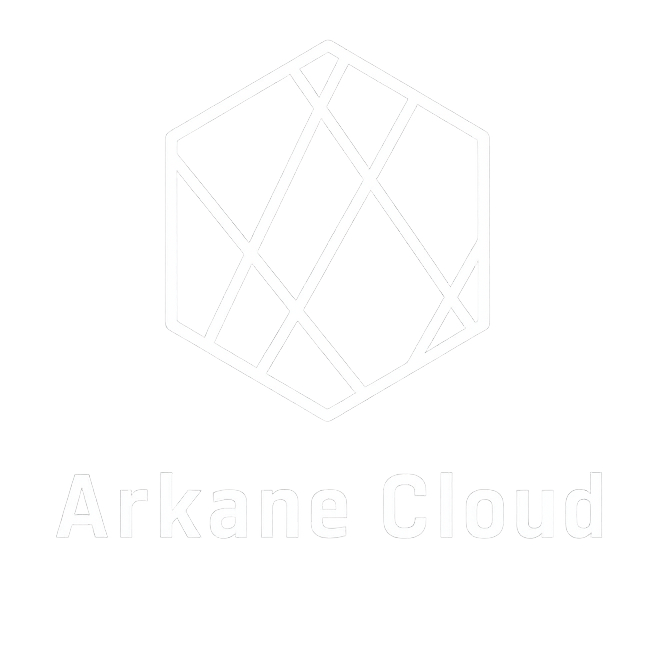Stable diffusion : Online Options with Arkane Cloud

Introduction to online access for Stable Diffusion and Arkane Cloud
In the rapidly evolving world of cloud computing and AI, the emergence of generative AI, particularly Stable Diffusion, represents a paradigm shift. As of 2023, generative AI has become the dominant trend in analytics, signaling a transformative period in data handling and processing. This shift coincides with the rise of cloud computing platforms like Arkane Cloud, which offers a robust infrastructure for GPU server solutions.
Stable Diffusion, a generative AI model, is known for producing high-quality, photorealistic images and videos from textual and image prompts. Its launch marked a significant advancement in the field, particularly in reducing processing requirements, thus making such technology accessible even on consumer-grade hardware. Its open-source nature has democratisized AI, enabling a broader range of users to innovate and experiment.
Arkane Cloud enters this landscape as a vital enabler, providing GPU server solutions specifically tailored for high-demand applications like AI generative tasks, machine learning, HPC, 3D rendering, and cloud gaming. Arkane Cloud’s offerings, including VM, container, and bare metal solutions, cater to a diverse range of computational needs, making it an ideal platform for users looking to leverage the power of Stable Diffusion and similar AI models.
In a world where cloud service providers charge based on consumption, the cost-effectiveness and scalability of cloud-based solutions like Arkane Cloud become increasingly relevant. The platform’s ability to rent out compute power efficiently addresses the growing demand for high-performance computing resources in a cost-sensitive market. This aligns well with the current trend in cloud computing, emphasizing not just technological capability but also cost control and optimization.
As generative AI continues to grow and more vendors integrate these capabilities into their platforms, the role of cloud service providers like Arkane Cloud becomes more prominent. They are not just hosting solutions but key players in the broader ecosystem of generative AI, enabling users to push the boundaries of innovation while maintaining a balance between performance and cost.
Understanding Stable Diffusion
The landscape of Generative Artificial Intelligence (AI) has witnessed significant advancements in recent years, with models like Stable Diffusion leading the charge. Stable Diffusion, a generative AI model, epitomizes the innovative spirit of this domain, offering unparalleled capabilities in image and video generation from textual and image prompts.
Stable Diffusion’s journey began as part of a broader wave of innovation in the AI field, spurred by the introduction of models like ChatGPT. This trend has seen the development of numerous groundbreaking tools, including Stable Diffusion, which have expanded the horizons of tasks achievable by AI, from text generation and image creation to video production and scientific research.
A notable milestone in this evolution is the release of Stable Diffusion XL 1.0 by Stability AI. Hailed as the company’s most advanced text-to-image model, it stands out for its ability to generate high-resolution images swiftly and in various aspect ratios. With 3.5 billion parameters, it showcases a sophisticated understanding of image generation. The model’s customization capability and ease of use are highlighted by its readiness for fine-tuning different concepts and styles, simplifying complex design creation through basic natural language processing prompts.
Stable Diffusion XL 1.0 also excels in text generation, surpassing many contemporary models in generating images with legible logos, fonts, and calligraphy. Its capacity for inpainting, outpainting, and handling image-to-image prompts sets a new standard in the generative AI field, enabling users to create more detailed variations of pictures using short, multi-part text prompts. This enhancement reflects a significant leap from earlier models that required more extensive prompting.
In line with its commitment to pushing the boundaries of generative AI, Stability AI has integrated a fine-tuning feature in its API with the release of Stable Diffusion XL 1.0. This allows users to specialize generation on specific subjects using a minimal number of images, demonstrating the model’s adaptability and precision. Furthermore, Stable Diffusion XL 1.0 has been incorporated into Amazon’s cloud platform, Bedrock, for hosting generative AI models, underscoring its versatility and potential for widespread application.
This advancement in Stable Diffusion not only enhances image resolution capabilities but also broadens the range of creative possibilities for users, signaling a future where generative AI models can cater to a diverse array of artistic and practical applications.
Why Use Cloud Computing for Stable Diffusion?
The integration of online cloud computing with generative AI, particularly Stable Diffusion, has ushered in a new era of efficiency and innovation. Cloud computing provides a backbone for AI applications, enabling them to leverage the immense computational power and scalability that these sophisticated models demand.
One of the primary advantages of cloud computing in this context is its cost-effectiveness. Traditional on-site data centers require significant upfront investment in hardware and maintenance, which can be prohibitive, especially for AI-driven projects. Cloud computing, on the other hand, allows organizations to access these powerful tools on a subscription basis, significantly lowering the barrier to entry and making research and development more feasible.
Intelligent automation is another critical benefit brought forth by the cloud. AI-driven cloud computing enhances operational efficiency by automating complex and repetitive tasks. This automation not only boosts productivity but also frees IT teams to focus on more strategic tasks. AI’s capability to manage and monitor core workflows without human intervention adds a layer of strategic insight and efficiency to the entire process.
In the realm of data analysis, AI’s ability to quickly identify patterns and trends in vast datasets is invaluable. Utilizing historical data and comparing it with recent information, AI tools in the cloud can provide enterprises with accurate, data-backed intelligence. This rapid analysis capability enables swift and efficient responses to customer queries and issues, leading to more informed decisions and enhanced customer experiences.
Improved online data management is another compelling reason to use cloud computing for AI applications like Stable Diffusion. AI significantly enhances the processing, management, and structuring of data. With more reliable and real-time data, AI tools streamline data ingestion, modification, and management, leading to advancements in marketing, customer care, and supply chain management. This improved data management is crucial for generative AI applications that rely on large and complex datasets.
Lastly, as cloud-based applications proliferate, intelligent data security becomes a paramount concern. Cloud computing, armed with AI-powered network security tools, offers robust security measures. These AI-enabled systems can proactively detect and respond to anomalies, thereby safeguarding critical data against potential threats. This security aspect is particularly important for AI models like Stable Diffusion, which may handle sensitive or proprietary data.
In summary, cloud computing not only facilitates the deployment of AI models like Stable Diffusion but also enhances their efficiency, security, and scalability, making them more accessible and effective for a wider range of applications and users.
Technical Deep Dive: How Online Stable Diffusion Works
Stable Diffusion, a trailblazing model in the generative AI landscape, employs a unique architecture that sets it apart from other image generation models. Its core functionality is based on a type of deep learning known as diffusion models, specifically the latent diffusion model (LDM).
The foundation of Stable Diffusion lies in the diffusion process, an innovative approach in deep learning. Diffusion models start with a real image and incrementally add noise to it, effectively deconstructing the image. The model is then trained to reverse this process, effectively “denoising” the image to regenerate it from scratch. This approach allows Stable Diffusion to create new, highly realistic images, effectively “dreaming up” visuals that did not previously exist.
Stable Diffusion’s architecture comprises three primary components: the variational autoencoder (VAE), U-Net, and an optional text encoder. The VAE encoder first compresses the image from its original pixel space into a smaller, more manageable latent space, capturing the image’s fundamental semantic meaning. In the forward diffusion phase, Gaussian noise is iteratively applied to this compressed latent representation. The U-Net block, which includes a ResNet backbone, then works to denoise the output from the forward diffusion, essentially reversing the process to obtain a latent representation.
The U-Net architecture, a type of convolutional neural network, plays a crucial role in image generation tasks within Stable Diffusion. It features an encoder that extracts features from the noisy image and a decoder that uses these features to reconstruct the image. When a text prompt is provided by the user, it is first tokenized and encoded into a numerical embedding using a text encoder. This encoded text is then combined with the U-Net features to generate the final image output, allowing the model to accurately translate textual concepts into detailed image features and reconstruct them into a photorealistic image.
This sophisticated architecture and the process behind Stable Diffusion signify a significant advancement in the field of AI-generated imagery. With 860 million parameters in the U-Net and 123 million in the text encoder, Stable Diffusion is considered relatively lightweight by 2022 standards, capable of running on consumer GPUs. This accessibility is a testament to the model’s efficiency and the ingenuity behind its design.
Arkane Cloud’s Unique Online Offering for Stable Diffusion
Arkane Cloud, as a provider of GPU server solutions, stands at the forefront of supporting advanced generative AI applications like Stable Diffusion. The integration of GPU servers into Arkane Cloud’s infrastructure brings a multitude of benefits, particularly for AI and machine learning tasks.
GPU servers, like those offered by Arkane Cloud, are specialized in handling complex computational tasks efficiently. These servers are optimized for parallel data processing, making them ideal for AI tasks such as machine learning, deep learning, and running generative AI models like Stable Diffusion. The primary advantage of GPU over traditional CPU-based servers is their ability to execute mathematical operations rapidly, which is essential for AI algorithms, providing significant performance improvements.
Key factors setting Arkane Cloud’s GPU online servers apart include their parallel processing capabilities, floating-point performance, and fast data transfer speeds. GPUs consist of thousands of small cores optimized for simultaneous execution of multiple tasks, enabling efficient processing of large data volumes. Their high-performance floating-point arithmetic capabilities are well-suited for scientific simulations and numerical computations found in AI workloads. Additionally, modern GPUs equipped with high-speed memory interfaces facilitate faster data transfer between the processor and memory compared to standard RAM used in CPU-based systems.
GPU servers are particularly adept at handling compute-intensive workloads. In the context of machine learning and deep learning, GPUs provide the necessary parallel processing capabilities to manage large datasets and complex algorithms involved in training neural networks. This makes them suitable for a range of applications, including data analytics, high-performance computing (HPC), and even graphically intensive tasks like gaming and virtual reality.
The components of a typical GPU server, like those in Arkane Cloud’s offerings, include powerful GPUs for parallel processing, high-end CPUs for system management, ample memory for smooth operation during intensive tasks, and fast data storage solutions to reduce bottlenecks during computation-heavy processes. These components collectively ensure that Arkane Cloud’s GPU servers are well-equipped to support the demands of generative AI models like Stable Diffusion.
In summary, Arkane Cloud’s GPU server solutions provide the essential computational power and efficiency needed for running advanced AI models, positioning the company as a key enabler in the realm of generative AI and machine learning.
Applications of Stable Diffusion in Various Fields
Stable Diffusion, an open-source text-to-image model, is revolutionizing industries with its advanced capabilities in generating highly realistic images. The model’s versatility and accessibility have opened up myriad possibilities across various sectors.
- Visual Effects in Entertainment: In the entertainment industry, particularly in character creation for visual effects, Stable Diffusion is a game-changer. It enables creators to input detailed prompts, sometimes as long as 20 to 50 words, to generate intricate and realistic characters. This technology significantly reduces the time and effort required to create diverse characters and visual elements in films and video games.
- E-commerce and Marketing: E-commerce platforms are utilizing Stable Diffusion for efficient product visualization. Instead of conducting expensive and time-consuming photoshoots for products in different settings, Stable Diffusion can seamlessly integrate products into varied backgrounds and contexts. This application is particularly beneficial for dynamic online marketing, where products need to be showcased in diverse environments to appeal to a broad audience.
- Image Editing and Graphic Design: The model has widespread applications in image editing. With Stable Diffusion, users can modify existing images with simple prompts. For example, changing the color of an object in an image or altering backgrounds can be done quickly and effectively. This capability is being integrated into numerous apps, enhancing the efficiency of graphic design processes.
- Fashion Industry: In fashion, Stable Diffusion offers a unique tool for virtual try-ons and design visualization. It can organically alter clothing in images, showing how an individual might look in different outfits. This not only aids in personal styling but also in the design and presentation of fashion products.
- Gaming Asset Creation: The gaming industry benefits from Stable Diffusion’s ability to create assets. Game developers use the model, or its modified versions, for generating complex game assets that would traditionally take weeks or months to create by hand. This significantly speeds up the game development process and enhances creativity.
- Web Design: In web design, Stable Diffusion aids in creating various themes and layouts. Designers can request specific color schemes or themes, and the model generates multiple layout options, streamlining the web design process.
- Inspiration for Creative Media: Stable Diffusion’s ability to generate surreal landscapes and characters offers inspiration for creatives in fields like video game development and movie production. The model’s capability to create highly detailed and imaginative visuals serves as a powerful tool for conceptualizing and storytelling.
The open-source nature of Stable Diffusion adds to its appeal, allowing free use and application development, making it a highly anticipated and widely accessible tool in the AI community. As the technology continues to evolve and more training data becomes available, its applications across industries are expected to expand, further revolutionizing how visual content is created and used.
Getting Started with Stable Diffusion on Arkane Cloud
Deploying Stable Diffusion on Arkane Cloud’s GPU servers involves a series of steps that leverage the online platform’s advanced computational resources for efficient AI image generation. Here is a comprehensive guide to setting up and running Stable Diffusion on Arkane Cloud:
Server Selection and Setup
- Begin by navigating to Arkane Cloud’s server dashboard. Select a suitable GPU instance, such as the RTX A5000, which is highly recommended for AI image generation tasks.
- Complete all required fields to launch your GPU instance. This step is crucial as it sets the foundation for your Stable Diffusion environment.
Software Installation and Environment Configuration
Originally cloned from https://github.com/AUTOMATIC1111/stable-diffusion-webui and adapted to run autonomously inside a Arkane Cloud workspace.
- Navigate to CI pipeline
- Run the Prepare stage
- Run the Run stage
- Open the deployment with the icon in the top right corner



 Jun 20,2024
Jun 20,2024  By Julien Gauthier
By Julien Gauthier